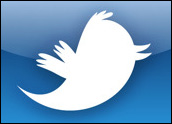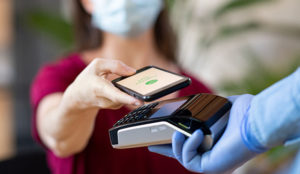
This story was originally published on July 16, 2012, and is brought to you today as part of our Best of ECT News series.
Most businesses recognize the need to be on Twitter to post about their latest products, services and recommendations. In addition to such marketing uses, however, it can also be used to manage customer relations.
“Early on, Twitter was primarily seen as a marketing and monitoring channel,” Justyn Howard, president and CEO of Sprout Social, told CRM Buyer. “Today, customers are relying on Twitter as an alternative to email and phone as a way to communicate with brands, ask questions and make purchasing decisions. To remain competitive, businesses have to figure out how to acquire, serve and retain customers through social channels.”
Because customers are tweeting about products and services, businesses need to consider how and when to respond to those tweets and to engage customers and clients in conversation.
“With very few exceptions, Twitter, as a communication channel and as a data source, should be part of your customer relationship strategy,” said Howard. “How large of a part and the exact approach will vary from business to business, but its growing importance is clear.”
A Brevity Strategy
Twitter is all about short, succinct statements, and its very brevity gives it both advantages and disadvantages as a way of relating to customers. It works great for retweeting a link to a customer’s positive blog review of a product, for instance, but maybe not so much for addressing complaints or even detailed questions.
Like all CRM, in other words, tweeting with customers must involve strategy.
“The business has to set real business goals for it to be more than a passing fad,” social media expert Natalie Petouhoff told CRM Buyer.
Goals for Twitter CRM might include customer service, public relations, marketing, customer acquisition, customer retention, or some combination of these. Businesses must have a clear idea of why they’re using Twitter, in other words, so they can determine how to make the most of it.
Monitoring Is a Must
In the rough and tumble world of social media, and Twitter in particular, businesses need to be prepared for the downside of instantaneous public communication, as well.
“If there are issues that your company has not dealt with, [like] bad customer service, and you go out into the marketplace without doing social media monitoring to know what customers are saying about your company, you could be walking into a hornet’s nest and stir up a whole lot of stuff that you didn’t bank on,” warned Petouhoff.
Monitoring keywords and conversations on Twitter and other social media is an integral part of a social CRM strategy, he said, since it keeps businesses informed about what’s being said about them, gives a glimpse into the minds of customers and provides the opportunity to respond.
Services like TwitHawk, for instance, will monitor tweeted terms and generate reports about who’s been saying what.
“[You can] set up TwitHawk to monitor terms relating to your company, like your company name, so when people are talking about you, you can chime in,” Chris Duell, TwitHawk’s founder and owner, told CRM Buyer. “This is particularly useful in cases where someone is disappointed with your service or product. You can immediately jump in to comfort that customer and hopefully win them back. They’ll be both surprised and impressed that you seem to genuinely care enough to personally reply to them and sort out their problem.”
Businesses that don’t monitor can get into trouble before their CRM strategy is even off the ground.
“The solution is not to do the ostrich — stick your head in the sand and pretend that the conversations are not going on because you are not looking to see them,” noted Petouhoff. “It’s to look, see them, create a plan to respond. Clean up the old stuff [and] start new campaigns once you have fixed what was not working.”
Businesses often don’t know exactly what they’re getting into when they start using Twitter. They need to be prepared for a potential onslaught of various kinds of customer interactions and be able to direct these interactions to the right staff people.
“With the rapid growth of both social media and mobile, channels like Twitter are becoming the most convenient way to contact a business, but it is also the channel the businesses are generally least equipped to handle efficiently,” said Howard.
“For some businesses, as much as two-thirds of their inbound messages on Twitter are customer service or sales inquiry related,” he observed. “It’s becoming more and more important that those parts of your organization be represented in your social media presence, and that they are equipped with tools and processes that allow them to work together and share data.”
























































